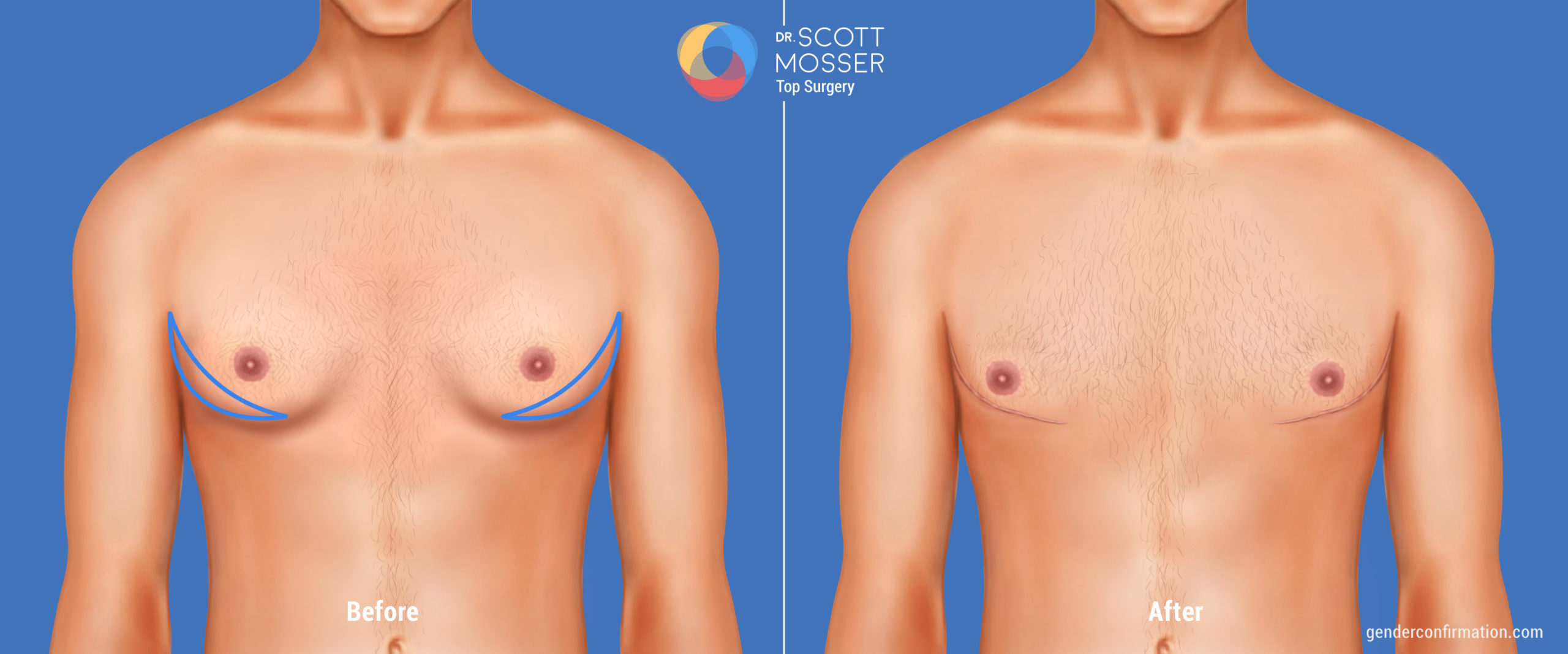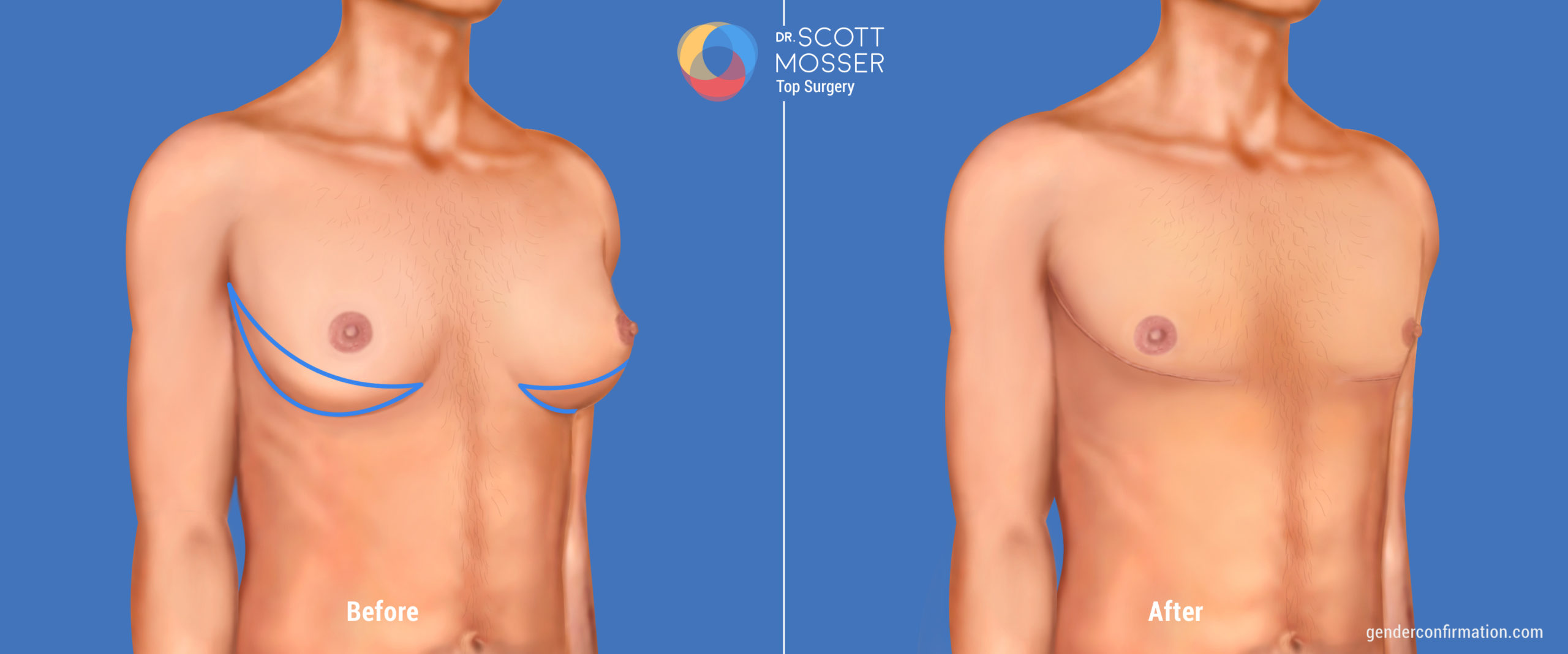Nipple-Sparing Double Incision Top Surgery
Nipple-sparing double incision top surgery is a type of chest reconstruction top surgery, formerly FTM top surgery. It involves a similar incision as the double incision technique but with the nipples left attached to the skin. In this article, we compare the nipple-sparing double incision technique with the regular double incision method in terms of nipple grafts, preservation of nipple sensation, and location of the nipple-areolar complex. Read on to find out if you are a good candidate for this gender confirming surgery.
What is a regular double incision?
At the GCC (Gender Confirmation Center), we have seen that double incision techniques are the most popular among our patients. This is because it allows our surgeons to remove the most amount of excess chest tissue and skin while creating the flattest and tightest chest possible.
When a classic double incision top surgery is performed, the areolas are replaced using the free nipple graft method. This means that the areolas are removed from their original location during surgery, resized, and sewn back onto the skin in their new location on the chest. In our practice, free skin grafts are almost always successful, meaning there is a 99% chance that the nipple grafts will heal and survive in their new location.
What is a Nipple-Sparing Double Incision?
This is a new procedure that uses a similar technique as a standard double incision, but instead of using nipple grafts, leaves the nipples attached to the skin, and the incisions are done in such a way that the nipples and areolas move outward a bit or “float” in the direction of the skin to be removed (i.e.: “sparing” nipples from being removed and replaced on the chest during surgery). A nipple-sparing double incision is achieved by making an oval-shaped incision around the lower chest area to allow for excess chest tissue to be removed. Refer to the images below to help visualize what this procedure looks like and where the nipples are likely to end up on the chest.
After a nipple-sparing double incision, there is a small chance patients may experience more erotic nipple sensation than after conventional double incision technique because the nipples might retain some of their initial sensory nerve connections.
A crescent-shaped incision is made on the lateral chest in order to place the nipples on the chest without using nipple grafts. The result is nipples that are slightly downward and outward on the chest.
Oblique view of the nipple-sparing double incision.
What is a sensation preservation DI with FNG?
Many patients that are interested in a nipple-sparing double incision (DI) look into this procedure because they want to maintain heightened levels of sensation post-op. Most double incision patients who undergo a free nipple graft (FNG) with their procedure experience losses in nipple sensation so that it only retains tactile levels of sensation. Patients can undergo a neurotization or sensation preservation DI, which involves connecting the grafted nipples to nerves, if maintaining erotic levels of sensation in their nipples is a priority for them. For more information about this procedure, click here.
Do I qualify for a Nipple-Sparing Double Incision procedure?
This procedure is for patients who have a nipple position that is not too low on their chest, and who have a limited amount of chest tissue to be removed. For some candidates, it might be a way to avoid nipple grafts and still achieve a flat chest. One way of looking at who is a good candidate for the nipple sparing DI is that it is most successful in patients who are also candidates for a periareolar incision but who may have a bit too much chest tissue for that incision type.
You can schedule a free, virtual consultation with one of our expert surgeons if you would like to talk about nipple-sparing double incisions and see if this technique would be right for you.
Request a Free Surgical Consultation Today.
All virtual and in-person consultations with our board-certified surgeons are free. Once you fill out this form, our patient care team will reach out and guide you through every step to get to surgery.







